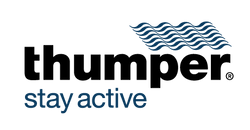How Much Screen Time Is Too Much Screen Time?

Now more than ever, it is easy to spend more time on our digital devices with new social distancing efforts in place. From laptops and television to tablets and phones, there are many ways that you may be clocking in more screen time than usual. But how do you know when you’ve had too much screen time? Check out a few drawbacks of extended digital device use and a few healthy ways to overcome these challenges during this extra time at home.
Computer vision syndrome
You’ve probably experienced some negative effects from staring at your computer screen for too long—known as computer vision syndrome. This occurs as a result of extended screen time and yields unfavorable symptoms such as blurred vision, headaches, pain in the neck and eyes, and eye strain.
Minimizing your computer use is recommended, but sometimes this is unavoidable. If this is the case, be sure to take breaks sporadically during your extended computer use, make sure that your eyeglasses are up-to-date, and sit with correct posture to help in dulling the effects of computer vision syndrome. Apps like Break For Eyes are a great reminder to take some rest when needed.
A minimum guideline for taking a break from your screen should be at least 5 minutes every hour. You can also take this opportunity to change your posture, do some stretches, relax, and refocus your eyes. You can also try the 20-20-20 rule! This rule means that for every 20 minutes, you should look up from your screen at something about 20 feet away for at least 20 seconds.
The HSE suggests that short, frequent breaks are better than less frequent longer breaks. Frequent breaks means you change your eye position and posture often enough to prevent issues resulting from being still for an extended period of time. So, a 5-10 minute break after an hour is better than a 20-minute break every 3 hours.
Harmful blue light
Did you know that too much screen time can lead to a disruption in your body’s natural sleep cycle? This happens as a result of the harmful blue light rays that are emitted from our digital device screens. Blue light is not easily blocked by our eyes and can be hard to avoid given the remote work situation of many people around the country.
If you are finding it harder to fall asleep at night, your technology use could be a key factor. Per recommendations given by the Sleep Foundation, try limiting your cell phone use 30 minutes before going to bed. Additionally, trying out blue light glasses can aid in blocking these rays to act as another tool in getting a better night’s sleep. These steps will help with stopping melatonin suppression caused by blue light and help you create a healthier technology-use closer to bedtime.
Mental health
Not only are there some physical setbacks caused by excessive screen time, but it can also take a toll on your mental health as well. Social media, although carrying many positive aspects, also can lead to serious mental health matters such as depressions, lower self-esteem, and anxiety.
As social distancing may have led to heavier social media usage, there are still ways to use social media in a healthy way. This includes practices such as following people that are positive and refraining from comparison to what you see online. If you are feeling overwhelmed or anxious, try taking a social media break. Stepping away from screen time when you have these emotions serve as a great reminder to live in the moment.
The solution?
In today’s world, it doesn’t seem very realistic to cut out screen time completely as we rely on multiple different technologies for careers, social interactions, and entertainment. But taking into consideration a few of these drawbacks, finding a balance in your technology use can have great benefits.
Substituting screen time for an exercise routine you can do at home or other mentally stimulating hobbies can help during this time of social distancing. When you start to notice some of these effects, take a step back to reevaluate your technology use and proactively plan to focus on better habits.

